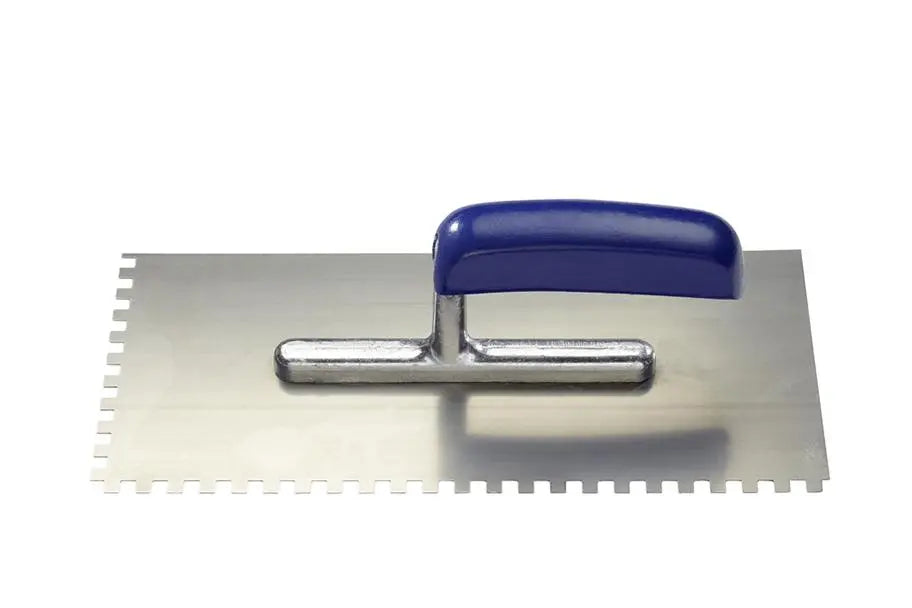Source: ivan canavera/ Shutterstock
You’ve decided to take on that tile project. It’s likely that your first decision will be which tile to use. But then you’re scratching your head: What tools do I need? Here, we’re going to be helping you choose the best trowel size for the tile job you’re about to tackle. What follows should help you make confident, informed decisions as you begin, because every do-it-yourselfer knows: If you don’t have the proper tools, you’re doomed from the outset.
When it comes to determining which trowel size is right for the job, it basically comes down to a couple of simple-enough things: Where’s that tile going, and what size tile are you working with? But there’s another little wrinkle. In addition to trowel size, you need to know what kind of teeth you need. Now, when it comes to trowel lingo, “teeth” are the notches on your tool. They are the grooves that leave the little troughs behind as you work your trowel over your thinset—the adhesive stuff the tile sits on. Wider troughs are best for bigger, heavier tiles. Of course, we’ll help you with this critical piece of the tile game, too.
Shop All of Our Tiling Tools
Let’s take a look at all the options and get you set to take on the specific tile project that you are about to tackle. There are three essential notch-shapes you need to know about when you are determining which trowel you need: U-notch, V-notch, and Square-notch.
V-notch Trowels
V-notch trowels spread the least amount of thinset, so they are what you need for smaller tiles that will take less of a day-to-day beating in your home—wall or ceiling tile that isn’t subject to the stomping that poor floor tile endures each and every day.
U-notch Trowels
U-notch trowels spread more thinset than your V-notch, so they are good for jobs where you’re using larger tiles.
Square-notch Trowels
The square-notch trowel applies even more thinset than the U-notch. Some tilers don’t see a significant difference between U-notch and square-notch trowels, but there is a bit of a difference, indeed. The standard guidelines break it down this way:
- A 3/16-inch to 1/4-inch V-notch trowel works best for up to 4.5-inch mosaic or wall tile.
- A 1/4-inch by 1/4-inch Square-notch trowel should be used for 4-inch to 8-inch tile.
- A 1/4-inch by 3/8-inch Square or U-notch works for 8-inch to 16-inch tile.
- And 1/2-inch by 1/2-inch Square or U-notch works for tile that is 16-inches and up.

Source: Gunter Kremer/ Shutterstock
We understand if the finer points of tool selection feel like an additional job you have to tackle before the home-improvement job at hand. We are dedicated to simplifying and helping you on your path. Just remember the basics: Larger tiles call for larger trowel sizes. V-notch trowels are best used for smaller tiles, as they spread less thinset, so, if you’re putting up that kitchen backsplash, you’re probably going to be using smaller tiles that call for the V-notch. U-notch trowels spread more thinset than V-notch trowels, and square-notch trowels spread the most thinset. When you’re dealing with those big floor tiles, you’ll certainly want to go with a U-notch or square-notch trowel. So, now, when you ask yourself what trowel you need, you should be able to make that decision with little-to-no consternation. Let’s get to work.

Source: F8 studio/ Shutterstock
Contact Contractor’s Direct for All Your Tiling Needs
If you have questions about tile and what supplies you need for the job, we’re here for you! Reach out to us at 1-800-709-0002.

